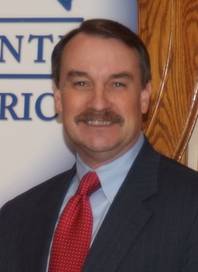Saturday, March 5, 2011 | 2 a.m.

John Cole
Sun coverage
John Cole, the newest member of the Clark County School Board, knows finance and the art of debt. His knowledge of bonds is coming in handy.
He also knows about a bad economy; he has a master’s in business administration from Eastern Illinois University. After a long career, including a stint as chief financial officer of the Fremont Street Experience, at 51 he is unemployed and living on savings.
In 2009, School Board President Terri Janison named Cole to the district’s bond oversight committee. In January, he was named to replace Janison, who left to work for Gov. Brian Sandoval.
Now, Sandoval wants to use what is known as “debt service reserves” — used to repay bonds for school construction — from Nevada school districts to help balance the state’s deficit-ridden budget.
The move, and the money involved, is in dispute.
But what is clear is that Sandoval cannot balance his budget without doing so. And the price tag for Clark County schools is $300 million.
How much bond money was raised in 1998 for building schools?
It was supposed to be $3.5 billion. But because our real estate values continued to grow, it was ultimately $4.9 billion. In the bond program, our ability to pay grew — because the revenue streams included money from property tax and room tax — and allowed us to issue more bonds.
What are “debt service reserves?” Are they like a piggy bank?
Exactly. If you have a mortgage on your home, it’s like putting money aside because you know you have a big payment in a year.
What’s wrong, in a time of emergency, with taking the money to help balance the state budget?
If the School District does not have the dollars to pay the upcoming payments, property taxes can be increased automatically to help increase the flow of dollars. The tax increase wouldn’t be happening in Carson City, it would be happening in Clark County.
What are your other concerns?
What’s to say the same problem isn’t going to happen again? And then where does the money come from? If the School District can’t make that payment and everyone’s property tax goes up, what have we fixed? And more people could lose their homes because of higher property taxes.
You’ve mentioned debt ratings in the past, what do you mean? (Wall Street rating agencies recently downgraded some School District bonds, but the bonds are still considered safe investments.)
If it ever fell below investment grade, that would not be good. This is not to say the Sandoval plan would do that. But we don’t know at this point. What if you went from Double-A to single-A (investment grade, but nearing junk), you might pay an additional 1 percent on your bonds, let’s say. Pay 1 percent more on $4.9 billion and that’s $49 million annually. That’s $49 million you can’t use to buy school supplies.
What if you restructure the debt?
Those restructured bonds would have a far smaller audience if they were, say, taxable instead of tax-free. Now people who once thought of Nevada and Clark County as safe, they would then say, “Oh my gosh.”

Join the Discussion:
Check this out for a full explanation of our conversion to the LiveFyre commenting system and instructions on how to sign up for an account.
Full comments policy